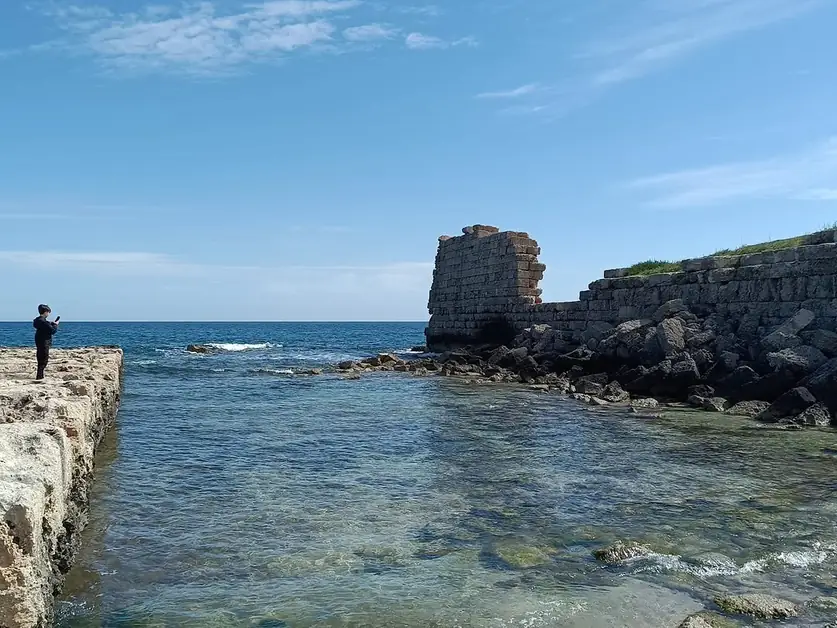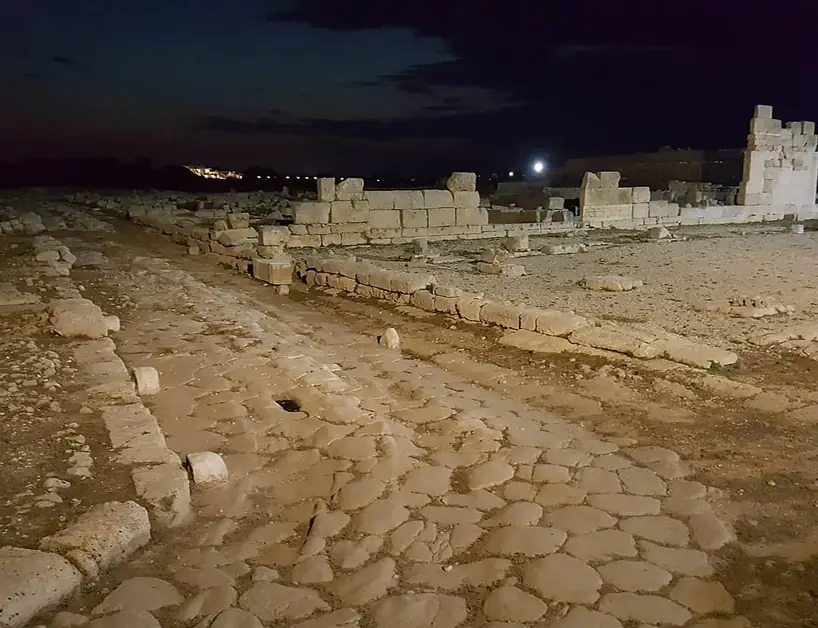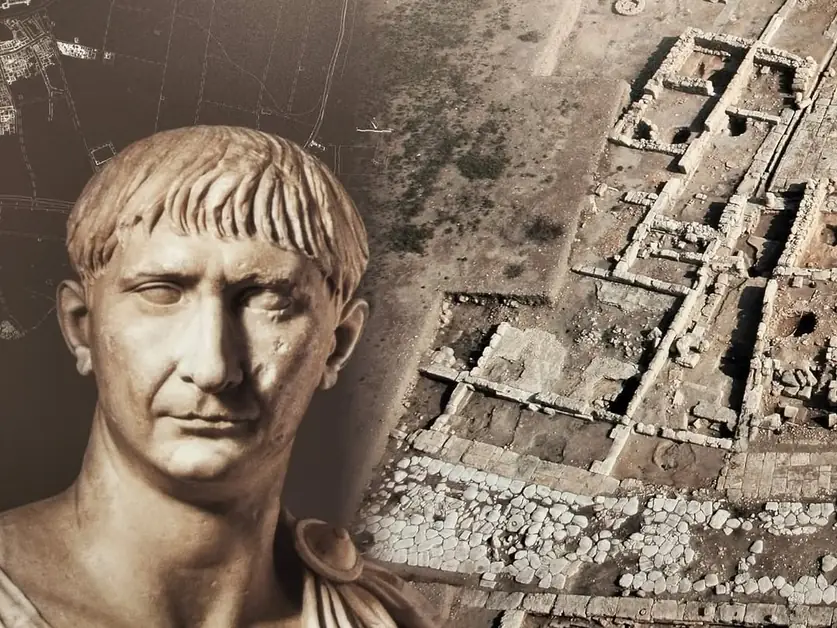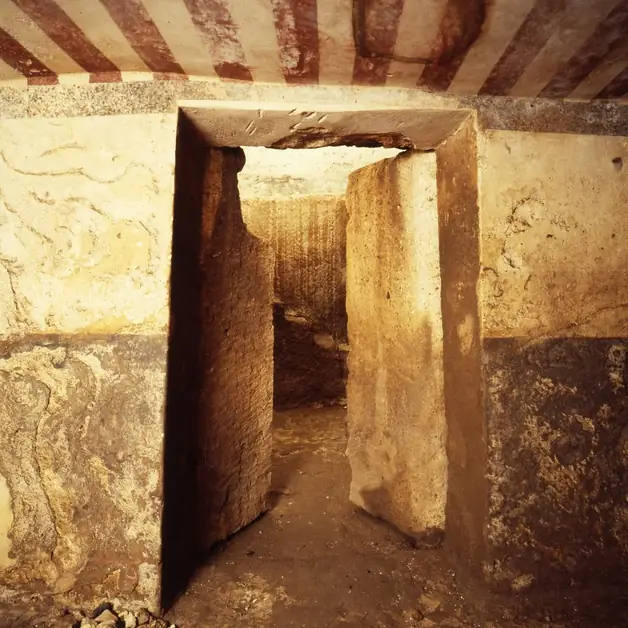The Fascinating History of Egnatia in Puglia
Egnatia, an ancient Messapic city, tells a rich story of culture and trade.

What is the origin of the name Egnatia?
The name Gnathia, later Latinized to Egnatia, has ancient origins. According to scholars, the city spoke a language of Illyrian type, very close to modern Albanian, but with influences and similarities in the Greek graphic sign. This relationship is confirmed by the epigraphs found in the necropolises, where the signs inscribed on the tombs show common traits with ancient Greek. Some linguists believe that the name Gnathia originated from that language, deriving from an Illyrian root related to the meaning of "mouth" or "opening." An evident reference to the natural shape of its harbor, a cove that opened like a mouth to the Adriatic Sea. That natural harbor made Egnatia one of the most important ports of the Peuceti, the people who inhabited this part of Puglia before the arrival of the Messapi and the Romans.
Who were the Messapi and how did the city originate?
The historian Strabo, at the end of the 1st century BC, describes Egnatia as a large and rich city founded by the Messapi. Although archaeological evidence is not definitive, it is certain that Gnathia was a Messapic city-state, located on the border with Peucezia. Like all Messapic cities, it was surrounded by walls, but, being by the sea, the fortifications ran in a semicircle only on the land side. The origins of the settlement date back to the 15th century BC: during the Bronze Age, a small village of huts arose on the hills of the acropolis. Over the centuries, this village transformed into a real stone city, defended by a dry stone wall, built without mortar or binder, still partially visible today. Around the city, agricultural properties and a system of radial roads developed that connected Egnatia with other major Messapic cities like Oria and Ceglie Messapica. The city was part of the Messapic dodecapolis, the federation of twelve city-states that constituted the political and cultural heart of the Messapi.
What is the significance of Gnathia pottery?
Between the 4th and 3rd centuries BC, Egnatia experienced one of its most splendid epochs, becoming a major production center for the famous "Gnathia pottery." This was refined black-glazed pottery with polychrome decorations, exported throughout Magna Graecia and the Mediterranean. These ceramics, now preserved in museums around the world, testify to the artistic and commercial wealth of the city.
How did Egnatia transition from a Messapic city to a Roman one?
In the 3rd century BC, after the wars against Rome, Egnatia was conquered by the Romans and became a civitas foederata, then a municipium. Its strategic position along the coast made it a crucial point for trade. With the construction of the Via Traiana – commissioned by Emperor Trajan to connect Benevento to Brindisi – Egnatia became an important statio, a stopping place for travelers and merchants heading to the East. The poet Horace also mentions it in his writings, recalling the passage through Egnatia during his journey from Rome to Brindisi with Maecenas in 37 BC.
What are the construction techniques of Egnatia?
Archaeological excavations have uncovered an extraordinary heritage of Roman structures: walls, forums, basilicas, baths, temples, and amphitheaters. The building techniques used in Egnatia reflect the various phases of its history. Indeed, it transitions from opus incertum, with irregular stones, to opus africanum, with pillars and fillings in stone, to opus reticulatum and opus testaceum, typical of the imperial Roman age. During the period of Marcus Vipsanius Agrippa, in the 1st century BC, Egnatia underwent significant urban monumentalization: the civil basilica, the forum, the cryptoporticus, public baths, and the port were built. All in harmony with the Augustan architectural tastes, which aimed to exalt the greatness of Rome even in the provinces.
What is the role of the goddess Cybele in Egnatia?
In the 2nd century AD, under Emperor Trajan, the city experienced a new period of prosperity. During this time, significant religious buildings were constructed, such as the shrine of the Eastern deities and the temple of the goddess Cybele, a symbol of fertility and rebirth. Here, the Ludi Megalenses were held, festivals dedicated to the Magna Mater, with performances and rites celebrating the myth of Attis, the young god representing vegetation and the cycle of seasons. In the sacred area, fragments of stone lions, bas-reliefs with the Magna Mater on the throne, votive masks, and ritual vases have been found, along with inscriptions dedicated to the priestess Flavia Cypare. All this testifies to the strong presence of Eastern cults, which coexisted alongside the official Roman religion.
What were the functions of the forum and the amphitheater?
The forum of Egnatia, paved with tuff slabs, was surrounded by a Doric portico and represented the main square of the city. Here, commerce, public ceremonies, and assemblies took place. On the acropolis, next to the forum, there were a temple, two stoas (long porticoes), and a porticoed square connected to the amphitheater. The Roman amphitheater, built in opus africanum, measured about 37 meters in length and 25 in width. Besides performances, it is believed it was also used for civic assemblies and religious ceremonies.
What do we know about the necropolises of Egnatia?
Outside the walls, the necropolises of Egnatia extended, from which many of the artifacts now preserved in the museum come. The tombs, often chamber or semicircular, dating back to the 4th-3rd centuries BC, were decorated with frescoes featuring floral and symbolic motifs. Among them, the most famous is the Tomb of the Pomegranates, discovered in 1971 and now visible inside the Archaeological Museum of Egnazia. The walls are adorned with ivy branches and pomegranates, symbols of fertility and rebirth, and still retain the original monolithic stone doors.
What is the history of Egnatia in the early Christian and Byzantine period?
With the spread of Christianity, between the 4th and 6th centuries AD, many pagan buildings were transformed or destroyed. The city became an episcopal seat, and two large early Christian basilicas with beautiful geometric mosaics and Christian symbols were built. The episcopal palace and the cryptoporticus testify to the religious importance reached during this phase. However, amid wars, epidemics, and earthquakes, Egnatia began to decline. Gothic and Saracen invasions devastated the city, and malaria contributed to depopulation. The few remaining inhabitants took refuge inland, founding new centers like Fasano.
What is the modern history of the excavations of Egnatia?
Over the centuries, the ruins of Egnatia were often looted. During the 19th century, French officials and local inhabitants excavated indiscriminately in search of treasures to sell, depriving the site of many valuable artifacts. Only in 1912 did the first scientific archaeological investigations begin, later resumed in 1939, 1964, and 1978, the year the National Archaeological Museum of Egnazia was inaugurated. Today, thanks to the work of the University of Bari and the Superintendency of Archaeology of Puglia, the site continues to yield new discoveries. Visiting Egnatia means walking through two thousand years of history in one of the most fascinating and authentic places of ancient Puglia.




